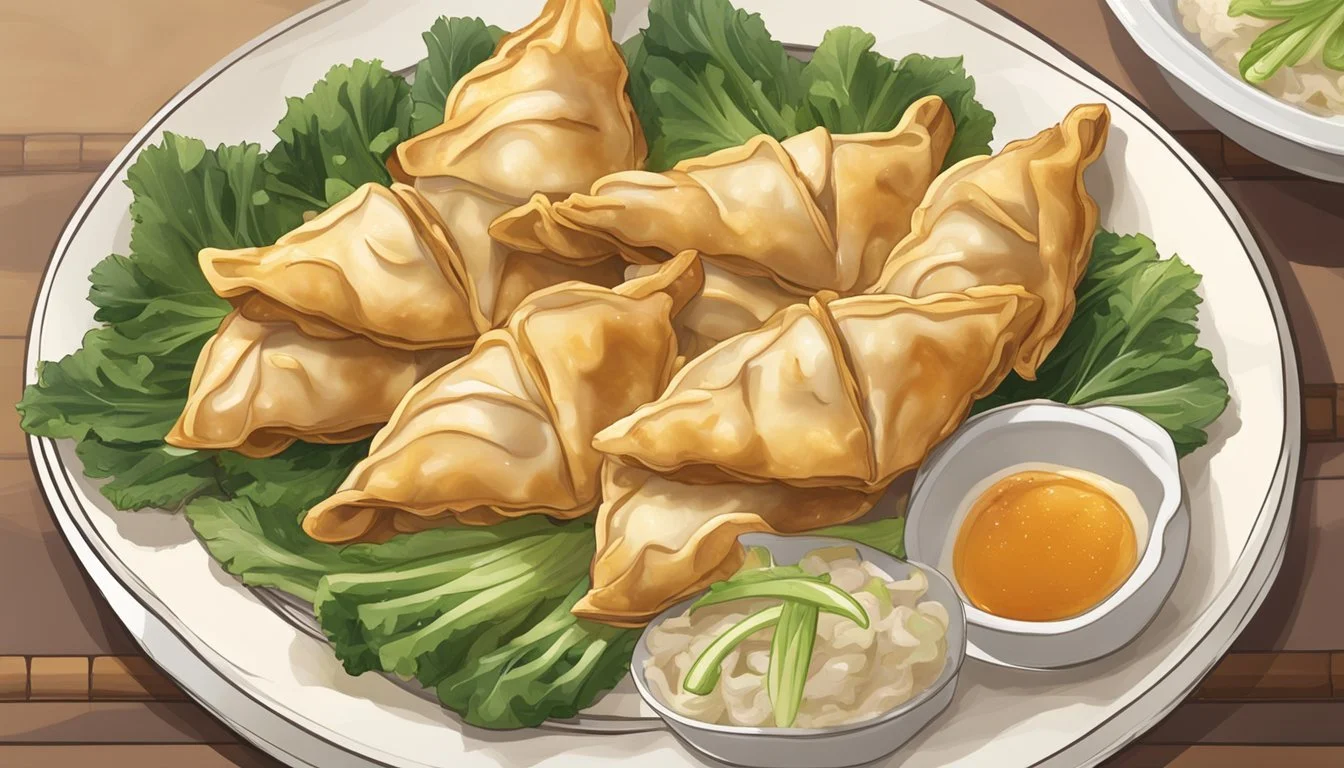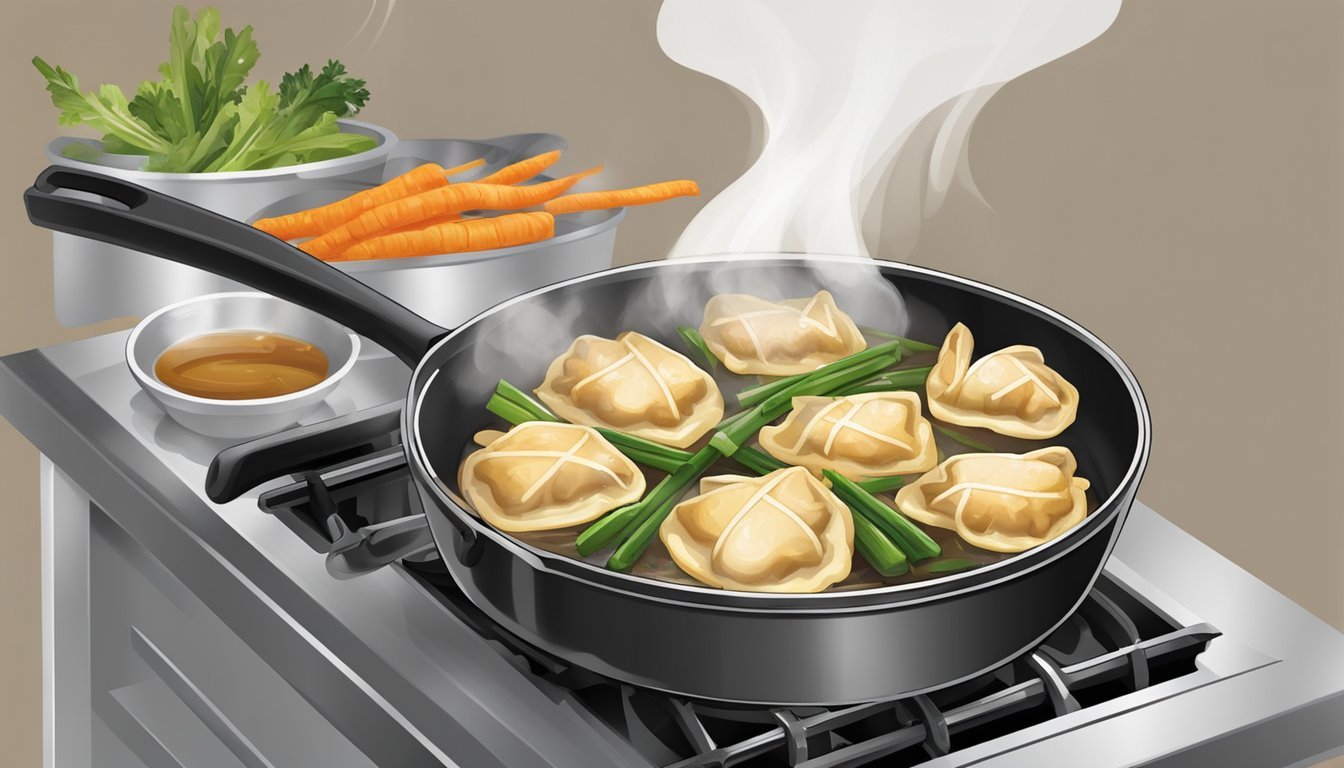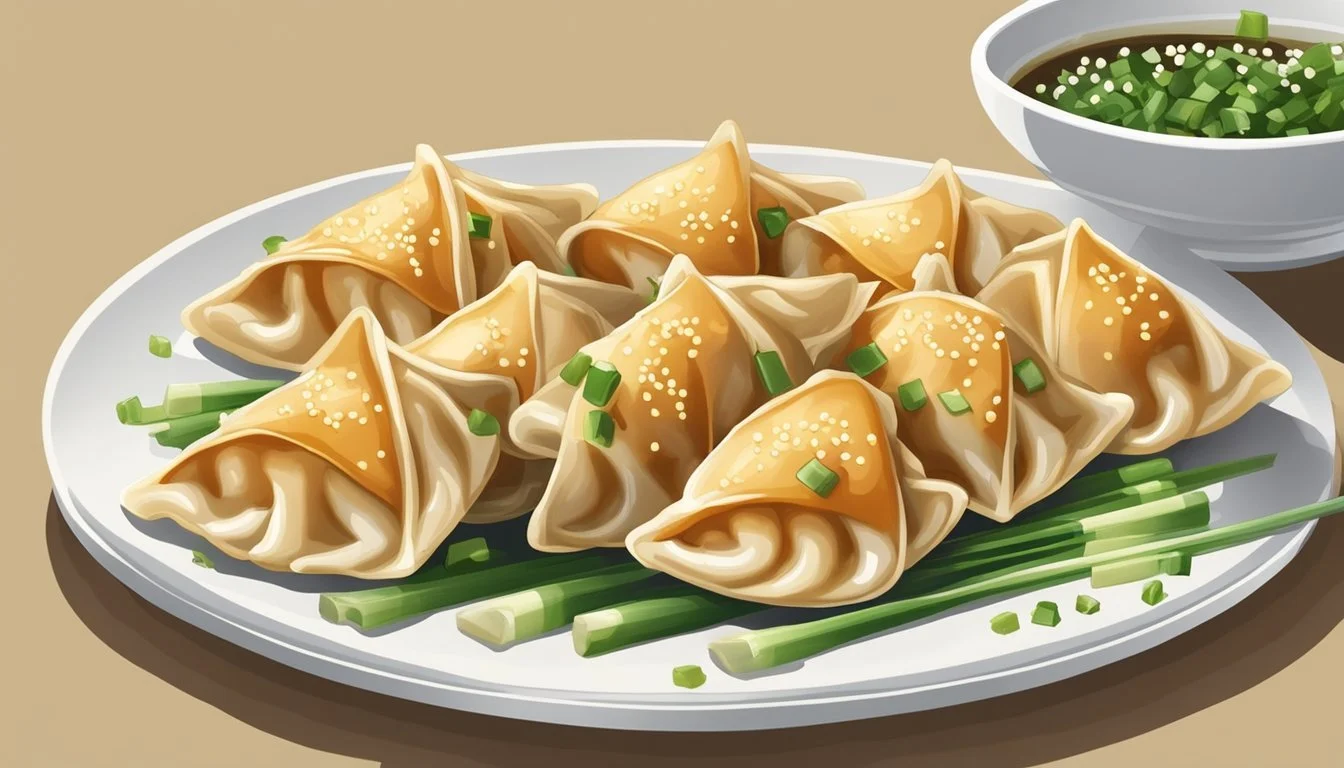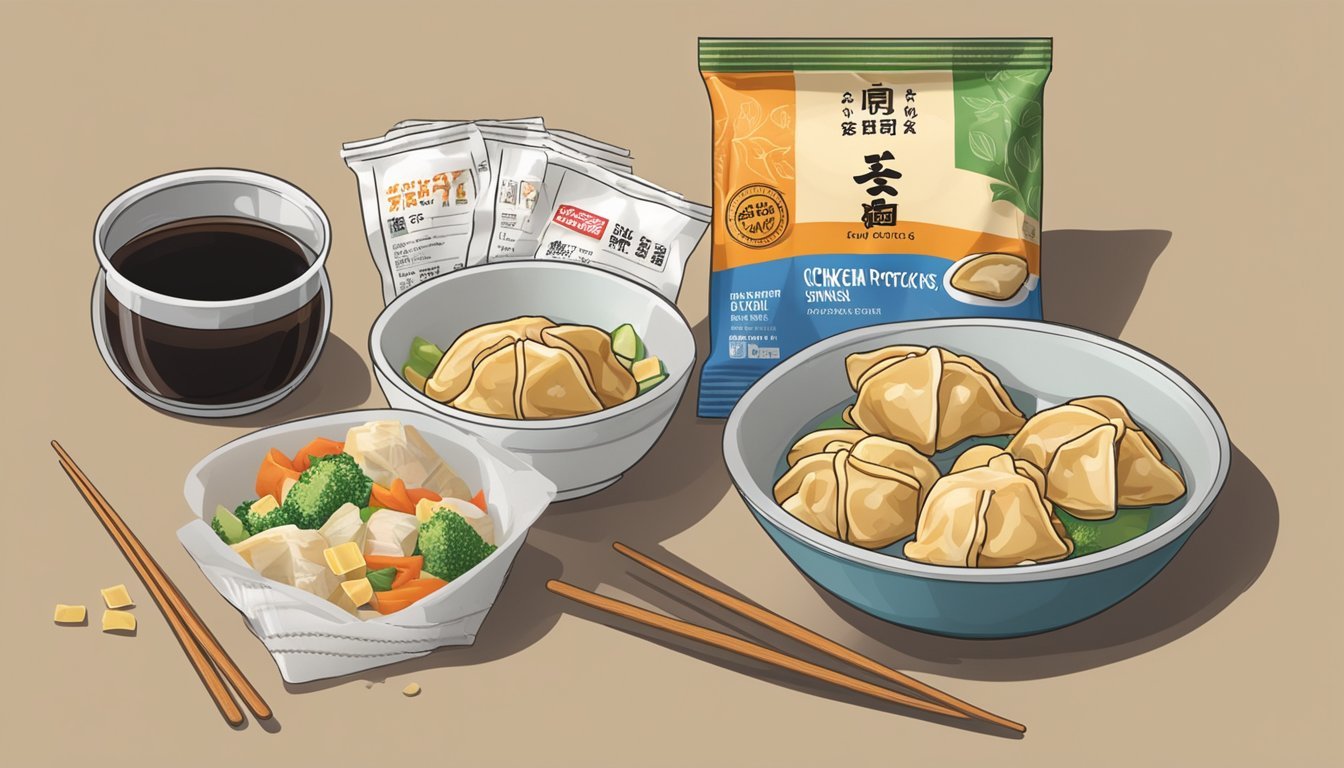How Long Do Chicken and Vegetable Potstickers Last?
Storage Tips and Shelf Life
Chicken and vegetable potstickers can be a delightful appetizer or a satisfying light meal. For those wondering about the shelf life of these tasty dumplings, chicken and vegetable potstickers can generally last for 3-4 days in the refrigerator when stored in an airtight container. To extend their life, they can be frozen for up to 2 months without losing their quality.
Proper storage is key to maintaining the flavor and texture of potstickers. Place them in a single layer on a baking sheet to freeze initially, preventing them from sticking together. Once frozen, transfer them to a freezer-safe bag or container.
For reheating, it's best to use a method that preserves the crispy exterior while ensuring the filling is hot. Reheat in a skillet with a bit of oil and some water for a steam-fry effect, or bake them in the oven until crispy. Balancing convenience and quality helps keep chicken and vegetable potstickers a go-to option for quick and delicious meals.
Understanding Potstickers
Potstickers are a popular variety of Asian dumplings that are enjoyed for their crispy texture and savory fillings. They come in multiple varieties, often filled with ingredients such as chicken, vegetables, pork, or shrimp, and are complemented by a range of condiments and dipping sauces.
Varieties of Potstickers
There are several varieties of potstickers, each offering unique flavors and textures. Chicken and vegetable potstickers are among the most popular, typically filled with ground chicken, cabbage, carrots, and green onions.
Other common types include pork potstickers, which may feature ingredients like shiitake mushrooms and garlic, and shrimp potstickers, often enhanced with seasonings such as soy sauce and sesame oil. Potstickers can also be vegetarian, focusing solely on a mix of vegetables like mushrooms, green onions, and cabbage.
These dumplings can be homemade for a customized touch or purchased pre-made from stores as frozen potstickers, offering convenience and quality similar to restaurant potstickers.
Key Ingredients and Condiments
The key ingredients in potstickers start with the filling and extend to the condiments. For chicken potstickers, common ingredients include ground chicken, cabbage, green onions, carrots, garlic, and spices like black pepper and white pepper. Vegetarian versions may swap meat for more vegetables, while pork and shrimp potstickers will use their respective proteins.
The wrappers are crucial and can be dumpling wrappers or wonton wrappers, folded into a crescent shape and pleated for texture. The cooking process often imparts a crispy bottom while keeping the top chewy.
Condiments can significantly enhance the flavor of potstickers. Popular choices include soy sauce, rice vinegar, sesame oil, and sriracha for a bit of heat. Dipping sauces might feature a combination of these ingredients, often sweetened with honey and garnished with green onion or sesame seeds for added flavor.
Storage and Shelf Life
The storage and shelf life of chicken and vegetable potstickers depend on whether they are refrigerated or frozen. Proper storage practices help maintain their taste and safety.
Refrigeration of Potstickers
Refrigerating potstickers can keep them fresh for a short period. Cooked potstickers should be placed in an airtight container and stored in the refrigerator. They generally last 2 to 4 days under these conditions. It’s crucial to refrigerate them within two hours of cooking to avoid bacterial growth.
For uncooked potstickers, refrigerating them is less ideal. If you must, they should be used within 1 to 2 days. Always ensure they are tightly sealed to prevent moisture loss and exposure to other food odors.
Freezing and Thawing
Freezing potstickers can significantly extend their shelf life. Uncooked potstickers can be frozen for up to 3 months. Place them on a baking sheet to freeze individually before transferring them to a freezer bag. This method prevents sticking.
Cooked potstickers also freeze well. They should be placed in an airtight container or wrapped tightly in plastic wrap and foil. These can last up to 2 months.
When you’re ready to eat frozen potstickers, it’s best to thaw them in the refrigerator overnight. You can also cook them directly from frozen, which might just take a bit longer. Avoid thawing at room temperature to prevent bacterial growth.
Cooking Techniques
For optimal flavor and texture of chicken and vegetable potstickers, precise methods like pan-frying in skillets and various steaming techniques can be employed.
Pan-Frying in Skillets
Pan-frying potstickers is a popular technique to achieve a crispy bottom and tender filling. Begin by heating oil in a large non-stick skillet over medium heat. Add the potstickers in a single layer, ensuring they do not touch. This allows for even cooking and prevents sticking.
Sear each potsticker for 2-3 minutes until the bottoms turn golden brown.
Then, add about half a cup of water to the pan, quickly cover it with a lid to steam, and lower the heat to medium-low. Allow the potstickers to steam for 5-6 minutes, ensuring the filling is cooked through. After the water evaporates, uncover the skillet to let the potstickers brown for another minute.
Steaming Methods
Steaming potstickers provides a tender texture and is an excellent method for those looking to avoid additional oils. Place a steamer basket in a pot over about an inch of water. Allow the water to reach a rolling boil, then reduce it to a simmer.
Arrange the potstickers in the steamer basket in a single layer, ensuring they do not overlap. Cover the pot and steam for approximately 8-10 minutes. This method ensures even cooking and helps maintain the dumplings' shape and texture.
For added convenience, consider using a dedicated dumpling steamer. These steamers often include multiple layers, allowing for improved efficiency and the ability to cook larger batches at once.
Both methods ensure delicious and beautifully textured chicken and vegetable potstickers.
Potsticker Preparation
Creating homemade potstickers involves preparing a flavorful filling and mastering wrapping techniques. Each step is crucial for achieving perfectly cooked, delicious dumplings.
Making the Filling
To make a delightful filling, begin by combining ground chicken, ground pork, or turkey. Add finely shredded carrots, napa cabbage, or green cabbage. Fresh garlic and ginger enhance flavor, while soy sauce, sesame oil, and hoisin sauce provide depth. Mix well until all ingredients are fully integrated.
Optional ingredients include mushrooms, green onions, and rice vinegar, which contribute additional taste and texture. Cooking a small dollop of the filling helps check for seasoning, allowing adjustments as needed.
A properly prepared filling ensures the final potstickers are savory and well-balanced.
Wrapping Techniques
Start by placing a heaping teaspoon of the filling in the center of a dumpling wrapper. Dumpling wrappers, potsticker wrappers, or wonton wrappers can all be used based on preference. Moisten the edges with water using a fingertip to help seal.
Fold the wrapper in half over the filling. Press the edges together firmly. For a crimped edge, pleat one side of the wrapper and press to seal. This technique improves visual appeal and helps prevent the filling from escaping during cooking.
Practice yields perfect wrapping results, ensuring the potstickers stay intact and steam evenly.
Serving Suggestions
Chicken and vegetable potstickers can be a versatile addition to many meals. They make excellent appetizers at gatherings. Serve them hot with a variety of dipping sauces such as soy sauce, sweet chili sauce, or hoisin sauce to cater to different tastes.
For a light meal or snack, potstickers can be paired with a simple side salad or steamed vegetables. The crispiness of potstickers contrasts well with fresh greens.
Potstickers also work well as part of an instant dinner. Serve them with fried rice or noodles for a quick and satisfying meal. Adding a bowl of hot soup can round out the meal perfectly.
Consider adding them to your takeout menu by accessorizing them with sauces and garnishes. Potstickers reheat well, maintaining their texture and flavor, making them ideal for takeout or home deliveries.
For those looking to diversify their servings, potstickers can be offered as a complement to a larger Asian-themed dinner. They are a great addition to bento boxes, adding variety and texture.
Here is a quick table for pairing suggestions:
Occasion Pairing Suggestions Appetizer Assorted dipping sauces Light Meal Side salad, steamed vegetables Instant Dinner Fried rice, noodles, hot soup Takeout Individually packaged with sauces Bento Box Part of a mixed meal with rice, veggies, and meat
By incorporating these serving ideas, chicken and vegetable potstickers can be enjoyed in various settings and meals.
Nutritional Information
Chicken and vegetable potstickers are a popular choice due to their balanced nutrition profile.
A serving size of 5 potstickers (147 grams) contains 270 calories. These calories are distributed among 6 grams of fat, 41 grams of carbohydrates, and 12 grams of protein.
The high carbohydrate content, at 62% of the total calorie intake, makes them a good source of quick energy. The fats, constituting 20% of the total calories, add essential fatty acids and flavor. The protein content stands at 18%, essential for muscle repair and growth.
For those monitoring their caloric intake, each potsticker has approximately 40-50 calories. This makes it easy to portion out servings based on dietary needs. It's important to note that preparation methods like deep-frying can increase calorie content compared to pan-frying.
Besides the basic macronutrient breakdown, potstickers may also contain sodium, which is a consideration for those managing blood pressure.
The potstickers use ingredients such as chicken, vegetables, and sometimes vegetable oil, which can add trace amounts of additional fats depending on usage.
People following specific dietary considerations, such as low-fat or high-protein diets, should take these values into account when incorporating potstickers into their meals.








